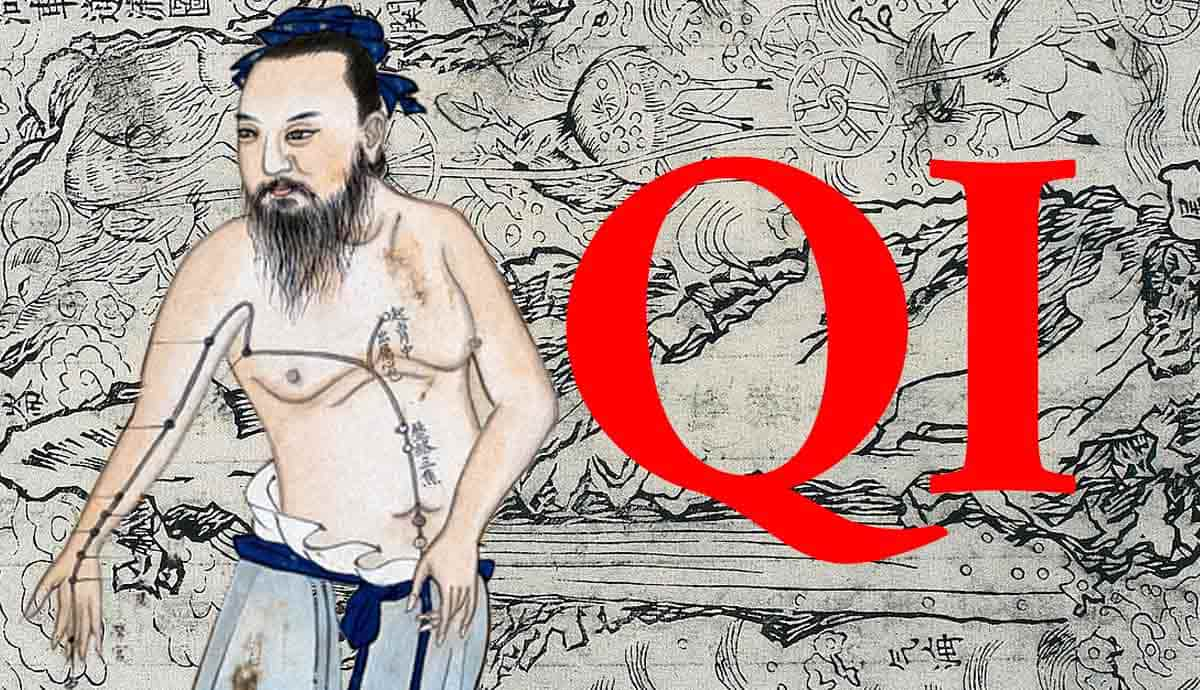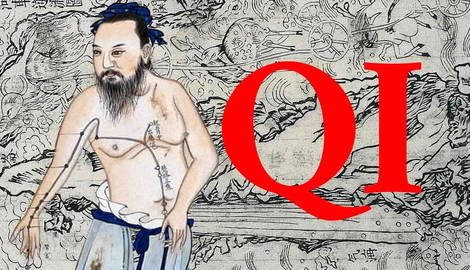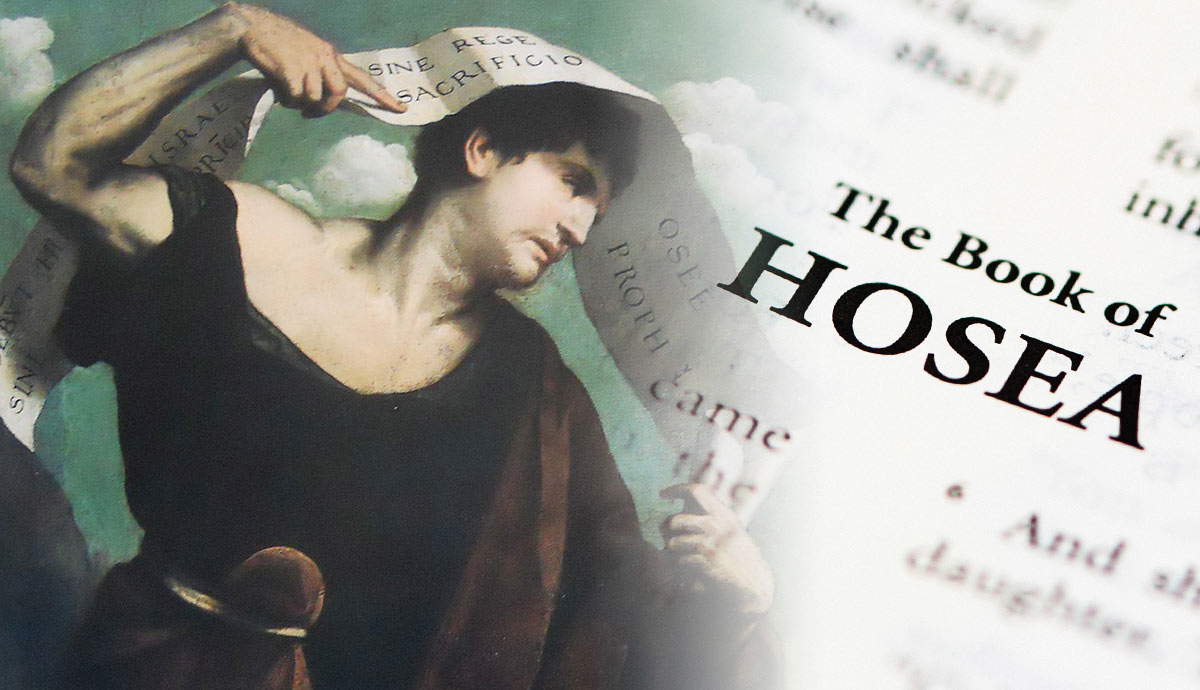
A character in a martial arts anime unleashes a planet-destroying burst of energy to defeat a foe. A martial artist in a wuxia film strikes at pressure points to paralyze someone. Another character places their hands on that same person to heal their injuries. These are outlandish and fantastic feats certainly but they draw their inspiration from a concept that has existed in various Eastern Asian philosophies for centuries: the idea of qi, or so-called “life energy.” Also called chi, ki (Japanese), prana (Hindu yogic traditions), and other terms, it describes a quasi-mystical energy that runs in tandem with and supports the natural processes of the physical body.
Definitions of Qi

Qi as a concept has no single meaning. The original hanzi, or Chinese ideogram, evokes the image of a pot of rice with steam rising from it, where the rice is the food and nourishment of the body and the steam is qi or energy generated from this. Although the word “qi” most commonly translates to “energy,” a better translation might be “vapor” or even “influence.” According to Chinese beliefs, qi is one of the sources of vitality in living creatures. The more supernaturally-inclined sources mention it in regards to natural forces like fire and wind, i.e. the qi of the Earth.
Humans are thought to have different types of qi that originate in the various organs of the body, according to traditional Chinese medicine. If this qi is in balance, the body and emotions are also in balance, promoting good health. The reverse is also true. Cultivation of qi comes from a healthy diet—as qi comes from food in a sense—and breathing and meditation exercises which have also been shown to relieve stress. These exercises can be seen in taiji or qigong, which we will mention below.
Traditional Medicine

Qi is thought to travel through the body via pathways called meridians, pooling in several key points. The idiom is often translated as “Five Circuits, Six Qi”: the Five Circuits represent the five elements and pathways that affect different groups of organs. Water corresponds to the kidneys and bladder, Wood to the liver and gallbladder. Fire is thought to nourish the heart, small intestine, the pericardium, and the so-called “Three Heaters” (which more likely refers to the digestive system as a whole). The Earth element nourishes the spleen and stomach. Metal, meanwhile, deals with the lungs and small intestine. These five pathways are each divided into Taoist yin and yang principles.
The five elements mentioned above are also tied to the seasonal cycle, which in turn is thought to influence health. The malfunction of the organs, according to traditional Chinese medical theory, originates from an excess of one of these five elements’ qi. These imbalances manifest as disease, lack of energy, and negative emotions, to name a few symptoms. The Six Qi refers to the different seasonal influences: cold, moisture, dryness, wind, heat, and fire. Treatments use acupressure and acupuncture to stimulate the meridians, or qi pathways, in accordance with the patient’s symptoms to alleviate or remedy a blockage or overflow.
There is no empirical evidence as of yet to substantiate how effective qi–based health treatments are, so they are not advisable as a substitute for conventional medical treatments.
Qigong and Meditation

Cultivation of qi occurs when a person engages in meditation and breathing exercises, which are part of qigong exercises. These include static postures, slow movements, and visualization of qi. Taijiquan is the most notable example of this, although it also has martial application when performed at full speed. A basic qigong breathing exercise might include deep breathing, which brings qi into the body, where it collects in the dantian or the center of qi presence. Holding breath and visualizing the energy flowing along the various meridians, when coupled with the movements of a given form, sends the qi along its pathways. Flow ensures that meridians are less likely to be blocked. Qigong emphasizes the idea of movement: physical movement begets the proper flow of qi.
Because qigong is a low-impact exercise, it can be practiced by people of all ages and fitness levels. It can improve flexibility, strength, cardiovascular health, and immune system response, among other benefits. It is also thought that qi cultivation could even increase longevity. Whether this has anything to do with qi or simply what modern medicine would recognize as healthier habits is up to individual interpretation.
Qi in Martial Arts

Traditional martial arts also use qi in their movements and forms. When martial artists speak of qi, they use it often to refer to things like balance, power, and more esoterically so-called “fighting spirit.” This last characteristic refers to a tangible presence that radiates an aura of fighting skill or instinct. Some martial arts styles also advertise the ability to disrupt an attacker’s qi by striking specific pressure points on the body that line up with meridians. Some also believe that it is possible for sufficiently skilled practitioners to project qi to affect an opponent without physically touching them, but this claim is highly unlikely. We’ll address the more grounded interpretations of qi shortly.
Arts like taiji employ deliberate movements that are designed along the principles of qi control. The form “Single Whip” for example visualizes qi being drawn up through the feet on inhale and expelled through the outstretched palm on exhale. When done at speed, this is a powerful palm strike aided by the rotation of the hip and grounded stance. In some Japanese martial arts involving the katana, students are encouraged to project their ki into their sword tip, drawing a direct connection between it and the dantian, enabling proper balance and alignment of the sword when swinging.
It is no coincidence that the dantian shares the approximate location of the center of gravity in the human body. By keeping focus on the center, a martial artist can stay balanced and power movement from their core, thereby driving internal power and maintaining the efficiency of motion.
Qi Cultivation and Health

For all the mystical language and thought surrounding qi, many of the concepts surrounding it have roots in established science. We’ll explore these below.
For example, the idea of qi being cultivated by proper diet and exercise tracks well with what conventional medicine has found. Many of the texts and manuals for qi cultivation written during the Ming Dynasty advocate eliminating all beverages except pure water, and we know the benefits of staying properly hydrated. Eating a diet of simple foods also may be helpful because it can be more nutritious and contain more fiber than a modern diet of overprocessed foods. No one should make serious changes to their diet or exercise habits without first consulting a doctor.
Exercise, be it in the slow-flowing movements of the qigong forms or a vigorous kung fu form or sparring session, strengthens the muscles and the cardiovascular system through consistent workouts. Qi flow is often compared to blood flow because qi and blood are intertwined in Chinese medical philosophy. Some of the static postures such as the horse stance used for some meditations lend themselves well to isometric exercises.
Deep breathing is also one of the healthiest practices one can do regularly. Even without doing any meditation, simply taking some time each day to do some deep breathing exercises helps in two ways: first, it increases the amount of oxygen in the bloodstream. By expanding the diaphragm, more air can flow into the lungs, which means more oxygen being carried throughout the circulatory system. In turn, increased oxygenation leads to more efficient muscle contraction and brain function. Deep breathing also activates the parasympathetic nervous system, which governs the ”‘rest and digest” functions.
Demystifying Qi in Martial Arts

So what about from a martial arts perspective? Is there any reality to the idea of qi? Well, there is, but many modern practices express it in terms of physics and biomechanics. The idea of rooting to the earth, for example, just means having a solid point of contact with the ground. Pushing against the ground exerts the same force back into the foot. This force, coupled with various muscle contractions, generates the power for an attack.
When traditional martial artists refer to qi in this context, they are referring to the kinetic chain. Everything is cumulative, and any body part out of alignment disrupts the chain and prevents the maximum power from being used. For a famous example of good kinetic chain linkage, look to Bruce Lee’s famous one-inch punch. Although Lee was in superb shape, it was equally his understanding of how to transmit power through a punch using the entire body at once that made the one-inch punch possible.
The idea of pressure points being powered by mastery of qi is simply knowledge of where key nerves are that lie directly beneath the skin. When supported by a bone or muscle and only a thin layer of skin, the nerve is vulnerable. An example is just below the ear.
Qi cultivation may not be like anything in a xianxia novel but it can provide a host of health benefits when done consistently.










